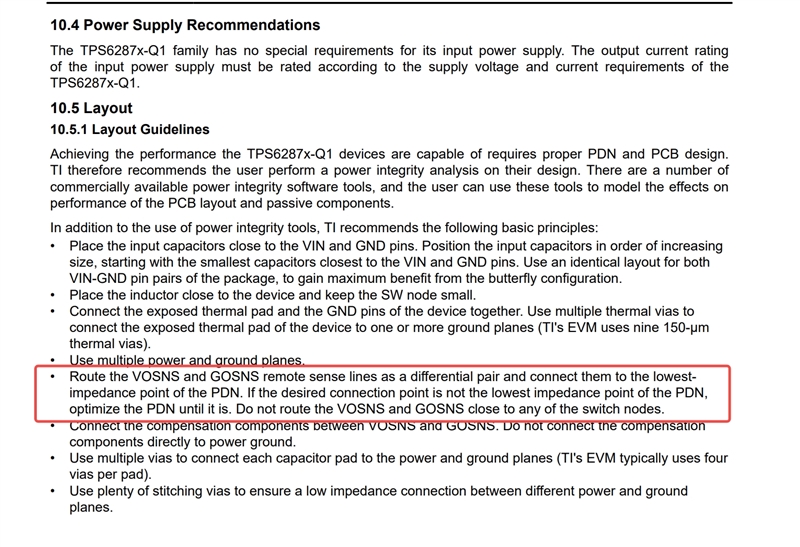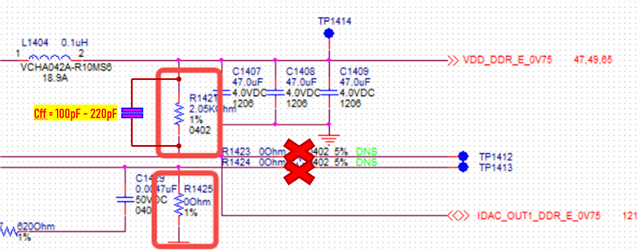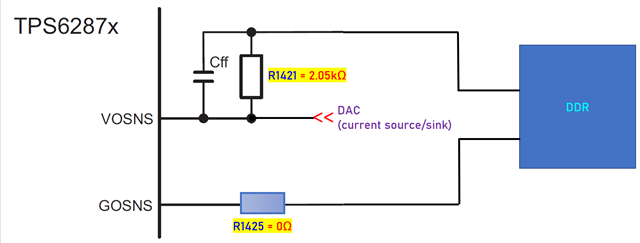Other Parts Discussed in Thread: TPS62873-Q1
Tool/software:
Hi team:
We are currently using TPS6287x-Q1 family for DDR power suuply. I have two questions about VOSNS and GOSNS
1. From datasheet, it suggests to route this two lines as a differential pair remotely, but I saw an application note, Remote sensing for power supplies (ti.com), Rsns is located remotely, and the other signal is connected to GND locally close to BUCK. From the notec, it seems differential pair is required if the chip equipped with a differential amplifier for remote sensing, but TPS6287x-Q1 family uses just Op amplifier from it's Functional Block Diagram.
My question is, do we need to connect GOSNS remotely from load, or can we just connect it to local GND near buck regarding this TPS6287x-Q1 family, and why is this datasheet layout guidance inconsistent with the application note.


2. Does it matter if we use a 2kohm Rsns to VOSNS, and 0ohm to GOSNS? Since we need this resistor for voltage adjustment, I suppose the resistance of RSNS is not a issue if it's just a Op amplifier inside the chip.






